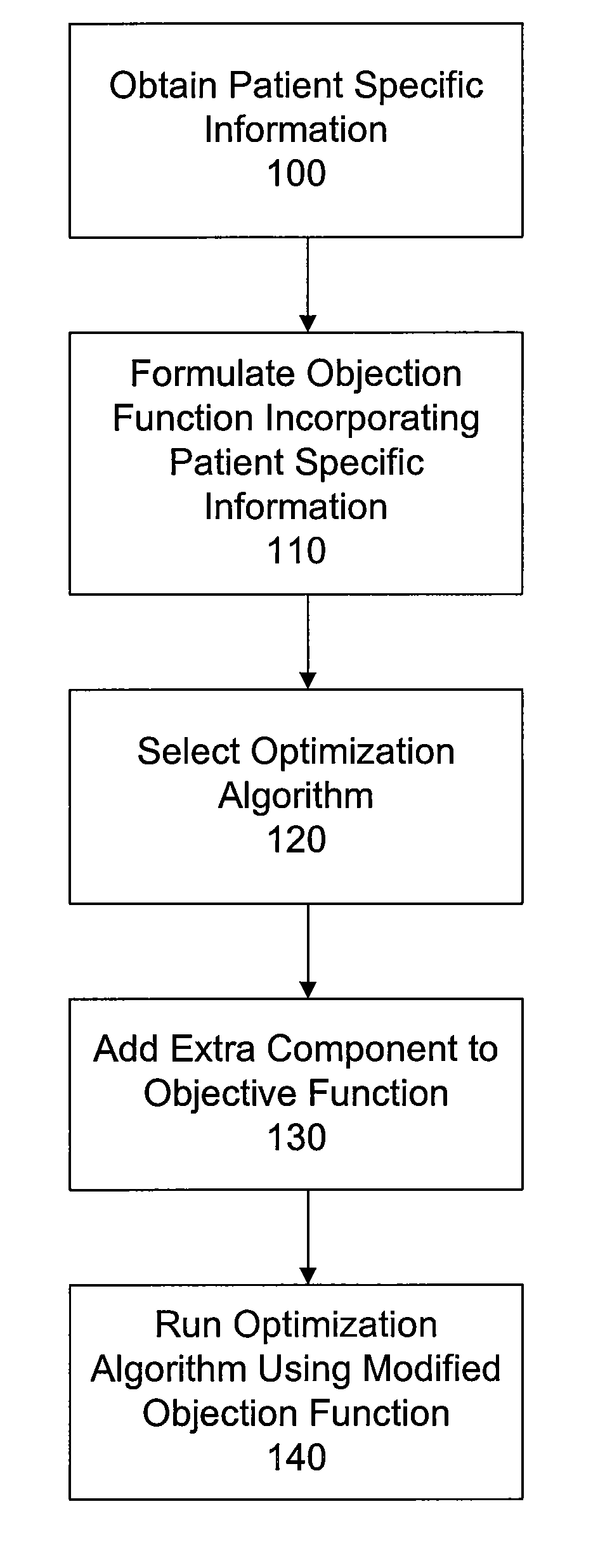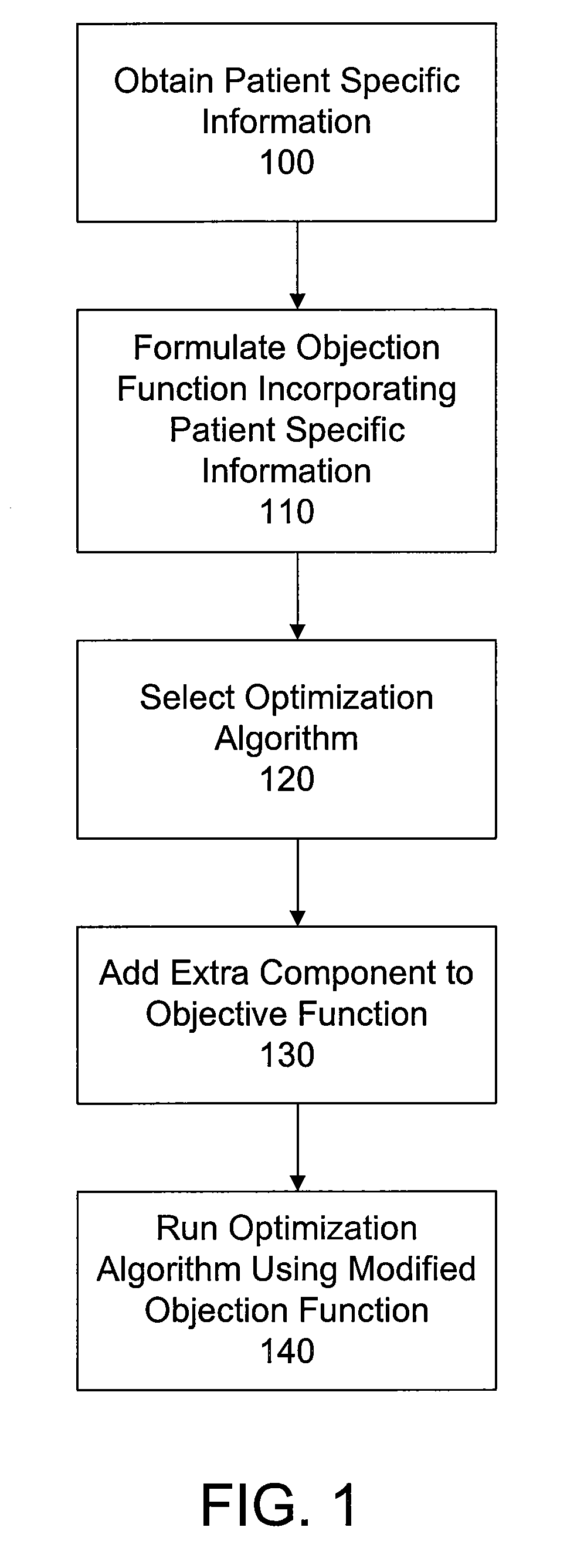Method for controlling modulation strength in radiation therapy
a modulation strength and radiation therapy technology, applied in radiation therapy, light therapy, therapy, etc., can solve the problems of increasing the difficulty of preparing a treatment plan, increasing the difficulty of developing a treatment plan, and the optimization algorithm for calculating treatment plans requires substantial computational time, so as to increase the number of monitor units, reduce the average size of the opening, and increase the fraction of radiation
- Summary
- Abstract
- Description
- Claims
- Application Information
AI Technical Summary
Benefits of technology
Problems solved by technology
Method used
Image
Examples
Embodiment Construction
[0014]As described above, treatment planning for radiotherapy seeks to inform the radiologist or other operator of the radiotherapy system how to deliver a prescribed fractional dose of radiation to a target volume, such as a tumor, while minimizing the radiation dose to surrounding tissue in the treatment volume, taking into account the capabilities of the radiotherapy system such as beam strength, beam energy, etc. Moreover, modern radiotherapy systems use sophisticated beam shaping structures, typically multileaf collimators (“MLCs”), to precisely control the shape of the radiation beam from any selected angle, and that can also be used to vary the beam strength using IMRT. Arc therapy, one of the newest techniques for radiotherapy, involves moving the gantry while delivering radiation. Sophisticated treatment planning software can interface directly with the radiotherapy system, generating machine language instructions for implementing the treatment plan. For example, such treat...
PUM
 Login to View More
Login to View More Abstract
Description
Claims
Application Information
 Login to View More
Login to View More - R&D
- Intellectual Property
- Life Sciences
- Materials
- Tech Scout
- Unparalleled Data Quality
- Higher Quality Content
- 60% Fewer Hallucinations
Browse by: Latest US Patents, China's latest patents, Technical Efficacy Thesaurus, Application Domain, Technology Topic, Popular Technical Reports.
© 2025 PatSnap. All rights reserved.Legal|Privacy policy|Modern Slavery Act Transparency Statement|Sitemap|About US| Contact US: help@patsnap.com


